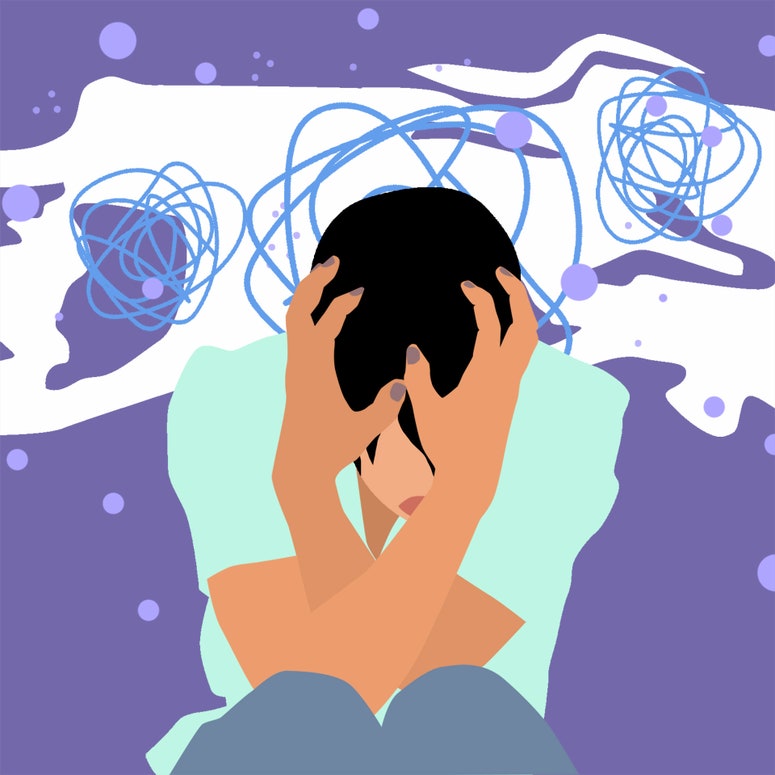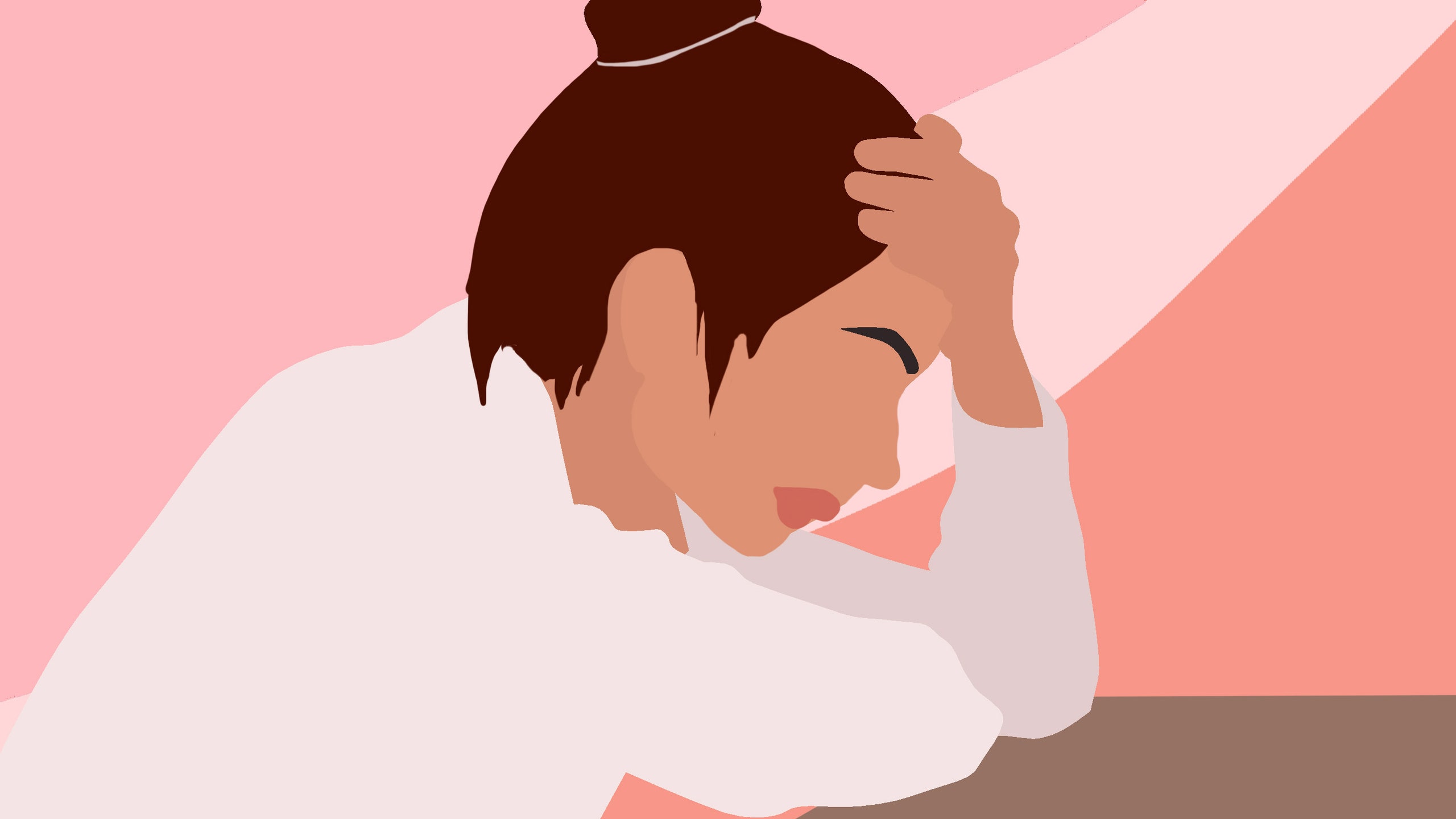High-functioning anxiety sounds a bit like a humblebrag, right? It implies that you’re keeping it together (thriving, even!), regardless of how anxious and overwhelmed you may be. But despite the popularity of this term in conversations and Google searches, it’s not actually recognised in the Diagnostic and Statistical Manual of Mental Disorders (DSM-5) as a mental health condition.
So what do we mean when we talk about high-functioning anxiety, and what should we be doing about it? This anxious-yet-highly-functioning health journalist consulted a few mental health professionals to find out how they define high-functioning anxiety, and what you should know if this term speaks to you.
We know it can do wonders for our skin, but what about stress?

What is high-functioning anxiety?
You won’t find high-functioning anxiety in the DSM-5, but that doesn’t mean that experts aren’t aware of the concept. It’s a term that’s often used alongside other traits that describe similar experiences yet also aren’t formal mental health diagnoses — like perfectionism, workaholism, and type A personality.
The ‘high-functioning’ qualifier is more than likely referring to subclinical anxiety, or anxiety that doesn’t quite meet the criteria for a formal anxiety disorder, explains licensed psychologist Josh Spitalnick, Ph.D., CEO of Anxiety Specialists of Atlanta. That’s because some sort of disruption in your functioning (whether it’s messing with your work, school, social life, relationships, etc.) is a key criterion when it comes to being diagnosed with a mental health condition. For instance, the diagnostic criteria for generalised anxiety disorder include this point: “The anxiety, worry, or physical symptoms cause clinically significant distress or impairment in social, occupational, or other important areas of functioning.”
Chances are, if you identify with the term high-functioning anxiety, you probably don’t feel like your anxiety is holding you back in those major ways. So, what are you experiencing then?
“When I say subclinical, really what I’m conveying is that someone is experiencing the cognitive, emotional, and physiological aspects of anxiety,” Dr. Spitalnick says. That might include things like restlessness, irritability, trouble sleeping, racing heart, unwanted thoughts, and many other uncomfortable symptoms of anxiety that aren’t always noticeable to those around you. But what’s missing is the behavioural piece — how these symptoms lead to disruptions in your day-to-day life.
“They’re not necessarily crumbling under pressure as you might imagine the extreme of any diagnosis,” licensed psychologist Alicia Hodge, Psy.D., tells SELF. “These people are seeing a lot of productivity or busyness, but ultimately are still very physically activated—they’re having a lot of worry, rumination, and concern.”
And how to tell if it might be a problem.

So, when is high-functioning anxiety a problem?
It’s no secret that being a perfectionist, a multitasker, and a person who generally gets shit done is rewarded and reinforced in many aspects of our society. You’re certainly not alone if you’ve felt like your fatigue, frustration, and overwhelm are just… part of being a person today, especially if you have a lot going on. So, when does being stressed out about your endless to-do list cross the line into high-functioning anxiety territory?
“The difference between the driven person that does not have high-functioning anxiety and the driven person that does is the symptoms of anxiety,” therapist and coach Aisha Shabazz, L.C.S.W., tells SELF. “Do you have restlessness during the day? Are you able to have an even balance and a natural pattern of sleep? Do you have any GI symptoms as it relates to being nervous, overwhelmed, anxious, stressed?” Essentially, if you’re experiencing mental or physical symptoms of anxiety, that’s something worth paying attention to.
“The way in which I conceptualise high-functioning anxiety is that you can take on more than most people. But just because you can lift a heavy boulder doesn’t mean it’s not heavy,” Shabazz says.
Still, most people — whether they realise it or not — seem to be adhering to the criteria laid out in the DSM: They’re not seeking help until their symptoms lead to real consequences in their daily lives, like missing deadlines or special events. In fact, many high-achieving people may not address their symptoms until they notice a dip in their performance or productivity, even if those symptoms include intense dread, constant worry, and the unavoidable physiological signs of stress.
“If the problem is not showing up behaviourally, then some people would say, ‘I don’t have a problem,’” Dr. Spitalnick, who notes that very few adults come into his practice with high-functioning anxiety, says; instead, he tends to see them once that functioning takes a hit. On the other hand, he does see a lot of kids, teenagers, and college students whose parents are worried that their stressed-out child is headed for burnout — despite their perfect attendance and exam results.
Burnout is another term you often hear associated with high-functioning anxiety — both hinting at our culture’s desire to describe an emotionally and physically fraught experience in a way that’s more relatable and less pathological than what you might find in the DSM.
“I think burnout became much more discussed because it’s essentially a manifestation of emotional and wellness issues, but it’s in relation to work,” Dr. Hodge says. “Since we’re very focused in our society on work and productivity, it kind of became a catch-all term for: This is not sustainable, this pace is ridiculous, and I can’t function like this.”
But high-functioning anxiety doesn’t only thrive in professional settings, notes Shabazz. It can also be fuelled by societal expectations thrust upon people based on their gender, race, culture, parenting status, and other factors.
We're feeling inspired.

What is the treatment for high-functioning anxiety?
If high-functioning anxiety is essentially anxiety that hasn’t yet led to real consequences in your daily life, why not address the symptoms before they have a chance to impact your functioning? While this might include therapy and/or medication, Dr. Spitalnick notes that not everyone who identifies with high-functioning anxiety necessarily needs that type of intervention.
For some people, addressing the symptoms of anxiety — especially the worry, the rumination, and the restlessness — can happen through mindfulness and meditation practices. “Anxiety is happening in the future — it’s the what ifs, it’s the hypothetical, things that have not happened yet,” Shabazz says. “[One] way in which we can combat anxiety is to bring us back to the present moment because it’s nearly impossible to exist in the present moment and to be in the future.” (I took Shabazz’s advice and tried to practice mindfulness in the shower — rather than my usual routine of cycling through all of my existential worries one by one — and honestly it worked. 10/10 would recommend this tip.)
But addressing the symptoms is just one piece of the puzzle. It’s also important to take a long, hard look at the environment that may be fuelling and reinforcing this high-functioning anxiety. Are you in an industry where unrealistic and unsustainable workloads are the norm? Have you taken on more obligations than any one person can reasonably tackle on their own? Are you only ‘functioning’ because you’ve been told by your community or your peers that you need to ‘put on a brave face’ and not ‘let anyone see you sweat’?
Shabazz suggests you start by asking yourself if your environment can change, or if you can change your relationship to that environment. Are there alternatives to your current reality? Are there ways you can do less or do things differently and know that you’re still living a life of value?
Dr. Spitalnick agrees, explaining that much of this work involves taking inventory of your values outside of professional success and even talking with people you admire (ideally in your same industry) about ways they manage their work/life balance. Checking out books, seminars, and webinars can also help you to shift your perspective on how to balance your personal and professional goals.
Finally, know that you don’t need to wait for dysfunction to strike in order to seek out therapy. Dr. Spitalnick suggests both cognitive behavioural therapy (CBT) and acceptance and commitment therapy (ACT) for people who identify with high-functioning anxiety. CBT “can teach people very basic skills very quickly — within just a few sessions — to reduce stress, find physical and emotional balance in their life, and come up with reasonable, achievable goals that are sustainable,” he says. “And acceptance and commitment therapy can, then, also help people identify the values that are important to them, both professional and personal, and find ways to achieve them.”
While society might tell us that keeping it together when you’re overworked and overwhelmed is a badge of honour, it’s time to start questioning the validity and sustainability of that mindset. “Your value is not in your productivity,” Dr. Hodge says. “It’s in living a meaningful life, and that can be done in so many ways.”
This article originally appeared on SELF.

